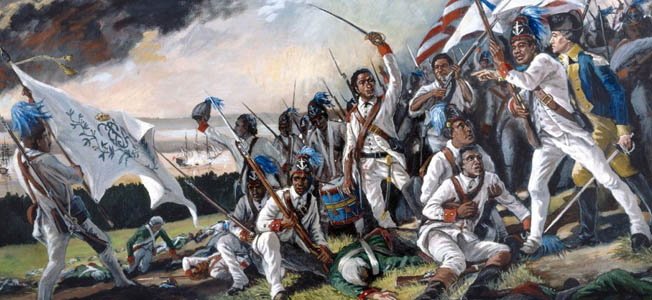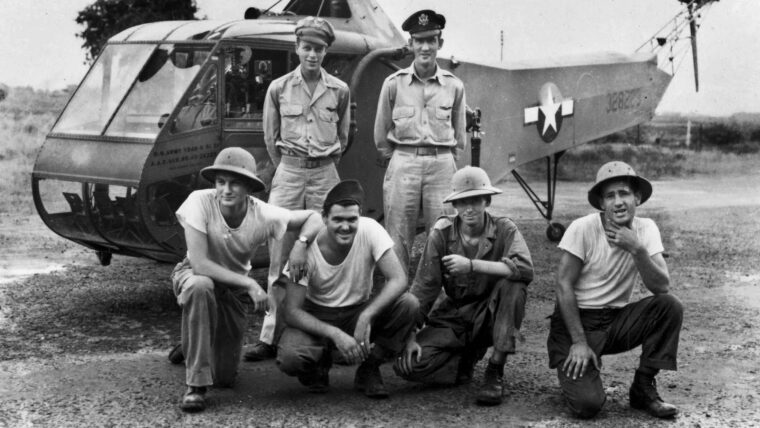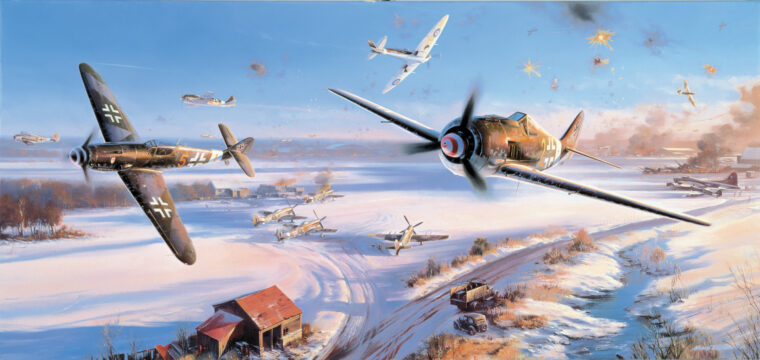
weapons
Sabers, Scimitars, and Swords
By Victor KamenirOn the coat of arms of Finland, a crowned lion tramples upon a curved sword with his hind paws while brandishing a straight sword in his right forepaw. Read more

weapons
On the coat of arms of Finland, a crowned lion tramples upon a curved sword with his hind paws while brandishing a straight sword in his right forepaw. Read more

weapons
In 1778, the Rhode Island legislature passed a law that allowed black slaves to enter the war in order to gain their freedom. Read more

weapons
When it came to advanced military technology in World War II, arguably no one was better at it than Nazi Germany, whose scientists Adolf Hitler keep busy trying to invent the ultimate “super weapon” capable of defeating his enemies. Read more

weapons
Early in 1944, German Field Marshal Erwin Rommel, the defeated hero of North Africa and now head of Army Group B in France, was tasked with strengthening the Atlantic Wall defenses against Allied invasion. Read more

weapons
For some Americans, World War II started early. In December 1937, four years before the Japanese attack on Pearl Harbor propelled the United States into the war, Japanese planes attacked an American gunboat, the USS Panay, on China’s Yangtze River, strafing and bombing the boat, sinking it, killing three American crew members, and the wounding 45 others. Read more

weapons
The elite German paratroopers, who were some of the finest fighters in the service of the Third Reich, believed they were exceptionally well prepared to defend the deep water port of Brest on France’s Brittany coast against an impending attack by the Allies. Read more

weapons
Pikes and most similar pole weapons disappeared from European armies by the early 1700s. After all, bayonets let each man convert his flintlock into a pike that fired bullets. Read more

weapons
The day’s flight was to be a fairly typical “rhubarb,” or a fast freelance strike, for the two pilots in their Bristol Beaufighters. Read more

weapons
America’s involvement in World War II was so deep and broad that it demanded that virtually every citizen, farm, and company become involved. Read more

weapons
A casual observer of World War II photographs after 1943 will often notice slouch hat- or beret-wearing Australian “diggers,” or armed Melanesian natives in the Australian Constabulary battalions, slogging through the muck and jungle of New Guinea, Bougainville, New Britain, and Borneo carrying a rather odd-looking weapon with a vertical top-mounting magazine. Read more

weapons
On September 14, 1939, Igor Sikorsky attained stability and control with the initial flight of an open cockpit test bed known as the VS-300. Read more

weapons
Many handgun enthusiasts’ blog entries recount how they stumbled onto a local gun show table only to find a dull-finished revolver that clearly bore the impression “Colt Commando .38 Special” on the left side of the barrel. Read more

weapons
On July 28, 1943, Luftwaffe Oberleutnant Erwin Clausen shot down another two B-17 Flying Fortresses to add to the two he had shot down the previous day. Read more

weapons
Vasily Emelianenko led an Ilyushin Il-2 Sturmovik, or “Storm Bird,” flight in late June 1942 against a German-held airfield near Artemovsk in eastern Ukraine, flying low up a deep ravine to avoid detection. Read more

weapons
During the five-month Japanese siege of Russian-held Port Arthur during the Russo-Japanese War of 1904-1905 both sides employed hand grenades. Read more

weapons
During Germany’s early string of victories between 1939 and 1941, Hitler informed the members of the nation’s aerospace industry that he had decided to impose new restrictions on aircraft research and development. Read more

weapons
Of the many highly successful fighter planes and bombers in the Allied arsenal during World War II, none was more versatile or singular than the Royal Air Force’s de Havilland Mosquito. Read more

weapons
As early as 1941, the German high command had visions of military technology that was far ahead of its time, and many innovative technological concepts were becoming reality. Read more

weapons
In early 1942 things could have hardly looked bleaker for the Allies. In Europe, Hitler’s war machine had steamrolled across the entire continent and was now battling before the gates of Moscow. Read more

weapons
During any war, combating countries predictably issue reports andcreate publicity more favorable to their own side. Often the difference is subtle, but sometimes it is profound. Read more